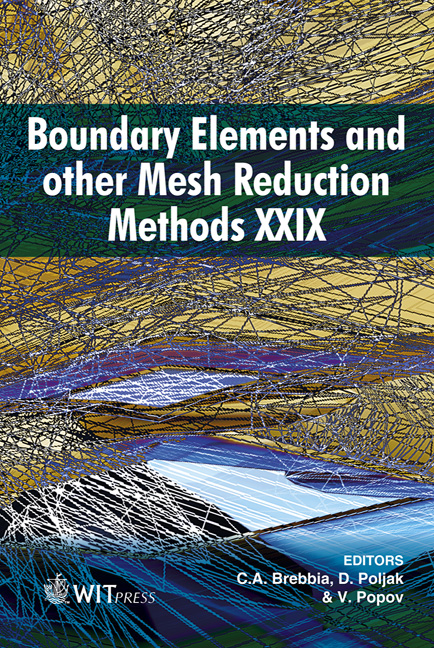Parallelized Iterative Domain Decomposition Boundary Element Method For Thermoelasticity
Price
Free (open access)
Transaction
Volume
44
Pages
10
Published
2007
Size
469 kb
Paper DOI
10.2495/BE070151
Copyright
WIT Press
Author(s)
B. G´amez, D.Ojeda, E. Divo, A. Kassab & M. Cerrolaza
Abstract
The boundary element method (BEM) requires only a surface mesh to solve thermoelasticity problems, however, the resulting matrix is fully populated and non-diagonally dominant. This poses serious challenges for large-scale problems due to storage requirements and the solution of large sets of nonsymmetric systems of equations. In this article, an effective and efficient domain decomposition, or artificial sub-sectioning technique, along with a region-byregion iteration algorithm particularly tailored for parallel computation to address these issues are developed. The domain decomposition approach effectively reduces the condition number of the resulting algebraic systems, while increasing efficiency of the solution process and decreasing memory requirements. The iterative process converges very efficiently while offering substantial savings in memory. The iterative domain decomposition technique is ideally suited for parallel computation. Results demonstrate the validity of the approach by providing solutions that compare closely to single-region BEM solutions and benchmark analytical solutions. Keywords: domain decomposition, thermoelasticity, parallel computation, boundary element method.
Keywords
domain decomposition, thermoelasticity, parallel computation, boundary element method.





